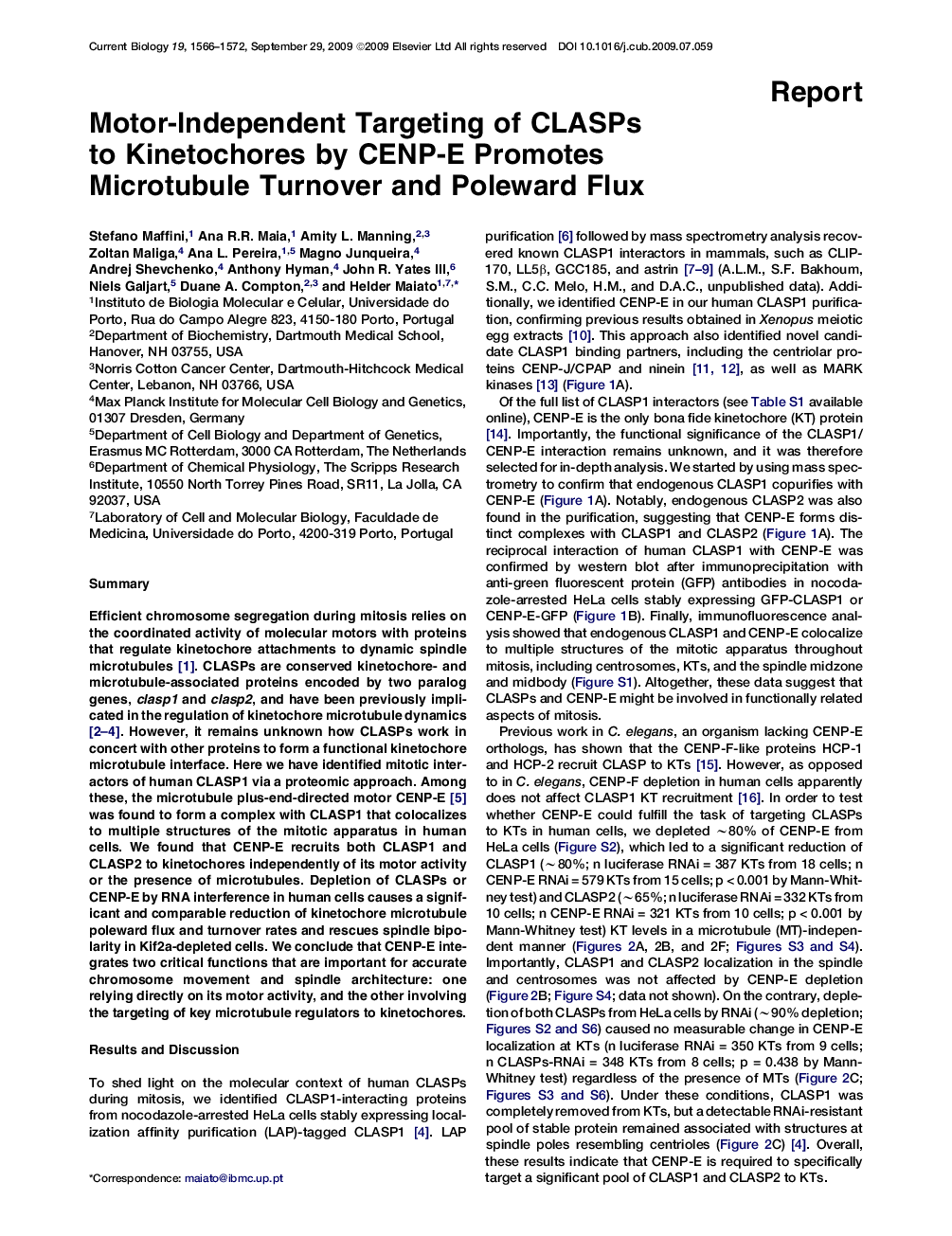| کد مقاله | کد نشریه | سال انتشار | مقاله انگلیسی | نسخه تمام متن |
|---|---|---|---|---|
| 2043322 | 1073350 | 2009 | 7 صفحه PDF | دانلود رایگان |

SummaryEfficient chromosome segregation during mitosis relies on the coordinated activity of molecular motors with proteins that regulate kinetochore attachments to dynamic spindle microtubules [1]. CLASPs are conserved kinetochore- and microtubule-associated proteins encoded by two paralog genes, clasp1 and clasp2, and have been previously implicated in the regulation of kinetochore microtubule dynamics 2, 3 and 4. However, it remains unknown how CLASPs work in concert with other proteins to form a functional kinetochore microtubule interface. Here we have identified mitotic interactors of human CLASP1 via a proteomic approach. Among these, the microtubule plus-end-directed motor CENP-E [5] was found to form a complex with CLASP1 that colocalizes to multiple structures of the mitotic apparatus in human cells. We found that CENP-E recruits both CLASP1 and CLASP2 to kinetochores independently of its motor activity or the presence of microtubules. Depletion of CLASPs or CENP-E by RNA interference in human cells causes a significant and comparable reduction of kinetochore microtubule poleward flux and turnover rates and rescues spindle bipolarity in Kif2a-depleted cells. We conclude that CENP-E integrates two critical functions that are important for accurate chromosome movement and spindle architecture: one relying directly on its motor activity, and the other involving the targeting of key microtubule regulators to kinetochores.
Journal: - Volume 19, Issue 18, 29 September 2009, Pages 1566–1572